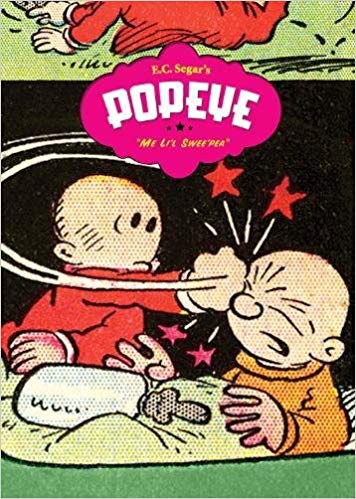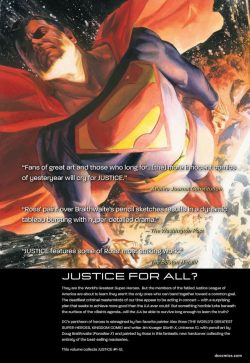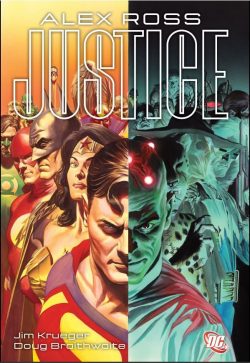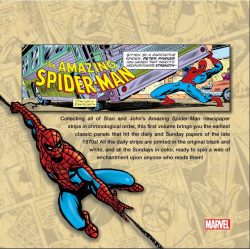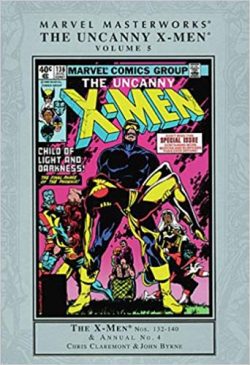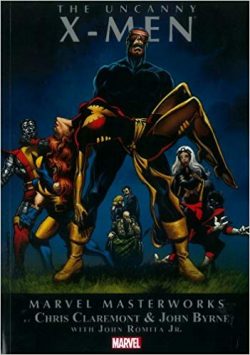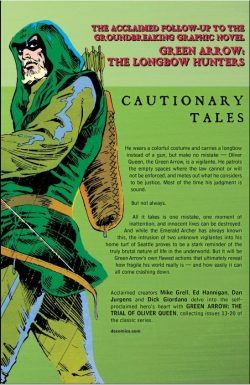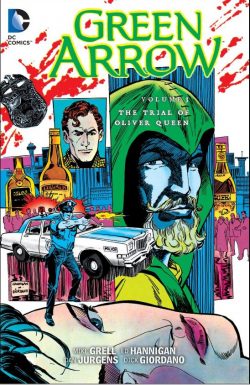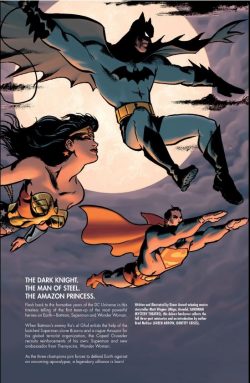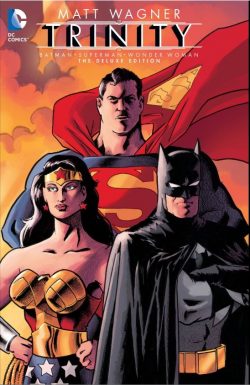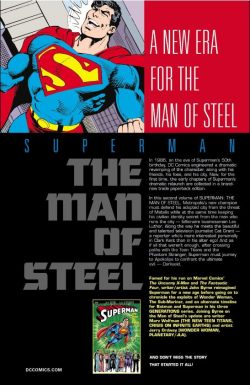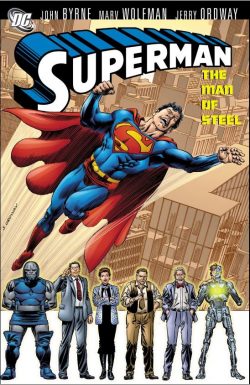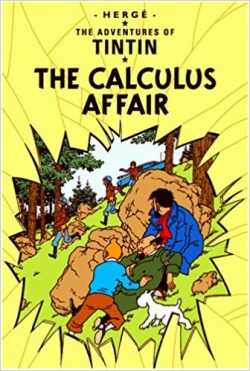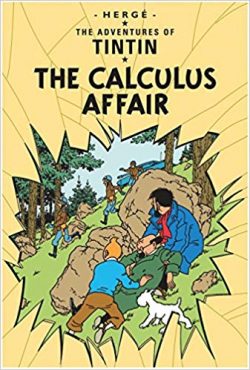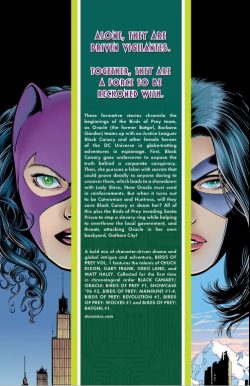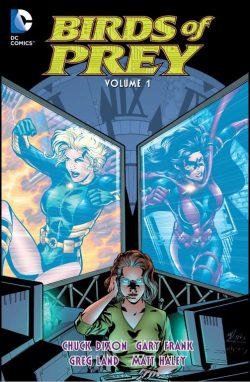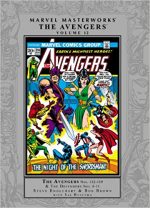
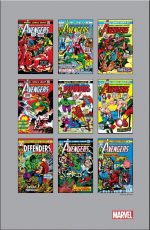
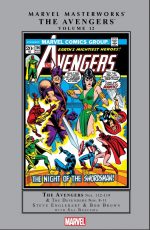
By Steve Englehart, Bob Brown, Sal Buscema, Don Heck & various (Marvel)
ISBN: 978-0-7851-5879-0 (HB)
One of the most momentous events in comics (and now, film) history came in the middle of 1963 when a disparate gang of heroic individuals banded together to combat an apparently out of control Incredible Hulk.
The Avengers combined most of the company’s fledgling superhero line in one bright, shiny and highly commercial package. Over the intervening decades the roster has unceasingly changed, and now almost every character in the Marvel multiverse has at some time numbered amongst their colourful ranks…
The everchanging roster proved that putting all one’s star eggs in a single basket can pay off big-time. Even when all Marvel Royalty such as Thor, Captain America and Iron Man are absent, there’s no detriment: it merely allows the team’s lesser lights to shine more brightly.
Of course, the founding stars are never away for too long due to a rotating, open door policy ensuring most issues include somebody’s fave-rave.
After instigators Stan Lee & Jack Kirby moved on, the team prospered under the guidance of Roy Thomas who grew into one of the industry’s most impressive writers, guiding the World’s Mightiest Heroes through a range of adventures ranging from sublimely poetic to staggeringly epic. He then handed over the scripting to a young writer who carried the team to even greater heights…
This stunning hardcover compilation – also available in eBook iterations – assembles Avengers #112-119, plus crucial crossover episodes from Defenders #8-11: collectively covering June 1973 to January 1974 and celebrating the beginning of an era of cosmic catastrophe and cataclysmically captivating creative cross-pollination…
This bombastic tome commences with Avengers #112 in ‘The Lion God Lives!’ (illustrated by Don Heck & Frank Bolle) wherein a rival African deity returns to destroy the human avatar of the Panther God. As the Black Panther and his valiant comrades tackle that threat, in the wings an erstwhile ally and enemy and his exotic paramour made their own plans for the team…)
Unreasoning prejudice informed #113’s ‘Your Young Men Shall Slay Visions!’ (Bob Brown & Bolle) as a horde of fundamentalist bigots – offended by the “unnatural†love between Wanda, the mutant Scarlet Witch and the Vision – turn themselves into human bombs to destroy the sinful, unholy couple. Soon after, ‘Night of the Swordsman’ in #114 (Brown & Esposito) formally introduces the reformed swashbuckler and his enigmatic psychic martial artist paramour Mantis to the team… just in time to thwart the Lion God’s latest scheme.
In 1973 wunderkind scripter Steve Englehart (who provides a context-enhancing Introduction in this collected volume) was writing both Avengers and Defenders (as well as Doctor Strange, the Hulk and Luke Cage, Hero for Hire) and, yearning for the days of DC’s summer blockbuster annual events, decided to attempt his own massive multi-player epic.
Bravely given the editorial go-ahead at a time when deadline crunches regularly interrupted ongoing storylines, the author and his regular pencillers Sal Buscema and Bob Brown laid their plans…
Threads had been planted as early as Defenders #4 with Englehart carefully putting players in place for a hugely ambitious cross-over experiment: one that would turn the comics industry on its head.
For kids – of any and all ages – there is a simply primal fascination with brute strength and feeling dangerous, which surely goes some way towards explaining the perennial interest in angry tough guys who break stuff and as best exemplified by Prince Namor, the Sub-Mariner and the Incredible Hulk. When you add the mystery and magic of Doctor Strange the recipe for thrills, spills and chills becomes simply irresistible…
Last of the big star-name conglomerate super-groups, the Defenders would eventually number amongst its membership almost every hero – and some few villains – in the Marvel Universe. No surprise there then since the initial line was composed of the company’s major league bad-boys: misunderstood, outcast and often actually dangerous to know. For Marvel in the 1970s, the outsider super-group must have seemed a conceptual inevitability – once they’d finally published it.
Apart from Spider-Man and Daredevil, all their heroes regularly teamed up in various mob-handed assemblages, and in the wake of the Defenders’ success even more super-teams featuring pre-existing characters would be packaged: The Champions, Invaders, New Warriors, Inhumans, Guardians of the Galaxy and so on… but never again with so many Very Big Guns…
The genesis of the team in fact derived from their status as publicly distrusted “villainsâ€, and they never achieved the “in-continuity†fame or acceptance of other teams, but that simply seemed to leave the creators open to taking a few chances and playing the occasional narrative wild card.
After earthly madwoman Barbara Norris was cursed by amoral Asgardian Amora the Enchantress, the human was transformed into an incarnation of old Avengers enemy Valkyrie. The denouement of the tale also left part-time Avenger and Defender the Black Knight an ensorcelled, immobile stone statue. As Strange and Co. searched for a cure, aided by the Silver Surfer and tempestuous Hawkeye (another ex-Assembler looking to forge a solo career), they all fell into a subtle scheme orchestrated by two of the greatest forces of evil in all creation….
The classic confrontation finally commenced in Avengers #115 with lead story ‘Below Us the Battle!’ (Brown & Esposito) wherein the still-understaffed heroes travel to England and the castle of the Black Knight, only to encounter mystic resistance, a troglodytic race of scavengers and a comrade long missing…
The issue also contained a brief prologue at the end. ‘Alliance Most Foul!’ reveals other-dimensional Dark Lord Dormammu and Asgardian god of Evil Loki allying to secure an ultimate weapon which will give them ultimate victory against all their foes. This despotic duo plan a false flag operation to deceive the Defenders into securing the six component parts: surreptitiously “revealing†that the reconstructed Evil Eye can de-petrify and restore the Black Knight – a plan that opens with a similar prologue at the end of Defenders #8…
‘Deception’ (Englehart, Sal Buscema & Esposito) is the first chapter in ‘The Avengers/Defenders Clash’, disclosing how a mystic SOS from the spirit of the Black Knight is intercepted by the twin gods of evil, leading directly to ‘Betrayal!’ in Avengers #116, wherein the World’s Mightiest Heroes, hunting for their missing comrade, “discover†their oldest enemies Hulk and Sub-Mariner may have turned Black Knight to stone…
This and third chapter ‘Silver Surfer Vs. the Vision and the Scarlet Witch’ see the rival teams split up: one to gather the scattered sections of the Eye and the other to stop them at all costs…
Defenders #9 (with Sal Buscema & Frank McLaughlin art) begins with tense recap ‘Divide …and Conquer’ before ‘The Invincible Iron Man Vs. Hawkeye the Archer’ and ‘Dr. Strange Vs. the Black Panther and Mantis’ sheds more suspicion and doubt on the vile villains’ subtle master-plan…
In Avengers #117, ‘Holocaust’, ‘Swordsman Vs. the Valkyrie’ and crucial turning point ‘Captain America Vs. Sub-Mariner’ (all illustrated by Brown & Esposito) lead to the penultimate duel in Defenders #10 (Sal Buscema & Bolle) in ‘Breakthrough! The Incredible Hulk Vs. Thor’ and the inevitable joining together of the warring camps in ‘United We Stand!’. Tragically, understanding comes too late as Dormammu seizes the reconstructed Evil Eye and uses its power to merge his entire dimensional realm with Earth’s.
Avengers #118 delivers the cathartic, climactic conclusion in ‘To the Death’ (Brown, Esposito & Frank Giacoia) wherein all the heroes of the Marvel Universe resist demonic invasion on hideously mutated home soil whilst Avengers and Defenders plunge deep into the Dark Dimension itself to end forever the threat of the evil gods (well, for the moment, at least…).
With the overwhelming cosmic threat quelled, the victorious Defenders attempt to use the Eye to cure their petrified comrade, only to discover that his spirit has found a new home in the time of the Crusades.
In #11’s ‘A Dark and Stormy Knight’ (Sal B & Bolle), the group battle 12th century black magic, fail to retrieve the Knight and acrimoniously go their separate ways – as did overworked scripter Englehart, who dropped the “non-team†to concentrate on “The World’s Greatest Super-Heroesâ€â€¦
Those never-ending struggles resume and the adventuring pauses after a delightfully traditional spooky Halloween tale as the Avengers – warned by clairvoyant vision from enigmatic Mantis – head once more to Rutland, Vermont for the ‘Night of the Collector’ (#119, by Brown & Heck): encountering old friends, a dastardly and determined foe, blistering action, staggering suspense and blistering battle…
As if extra enticements be needed, also included in this compendium are pages and pin-ups from company fanzine F.O.O.M. (#5, 6, 7: Mantis by John Byrne & Duffy Vohland, Jarvis by Marie Severin and a bombastic team shot by John and Sal Buscema), plus house ads for Avengers #116, previous collection covers from Carlos Pacheco, Jesus Merino & Ang Tsang, John Romita & Richard Isanove and original art pages by Brown & Esposito and #119’s Romita cover.
Roy Thomas and Steve Englehart were at the forefront of Marvel’s second generation of story-makers; brilliantly building on and consolidating the compelling creations of Stan Lee, Jack Kirby and Steve Ditko while spearheading and constructing a logical, fully functioning wonder-machine of places and events that so many others were inspired by and could add to.
These terrific tales are perfect examples of superhero sagas done just right and also a pivotal step transforming the little company into today’s multinational corporate colossus. Best of all, Englehart’s forthcoming concoctions would turn the Marvel Universe on its head and pave the way for a new acme of cosmic adventure…
© 1973, 1974, 2018 Marvel Characters, Inc. All rights reserved.

